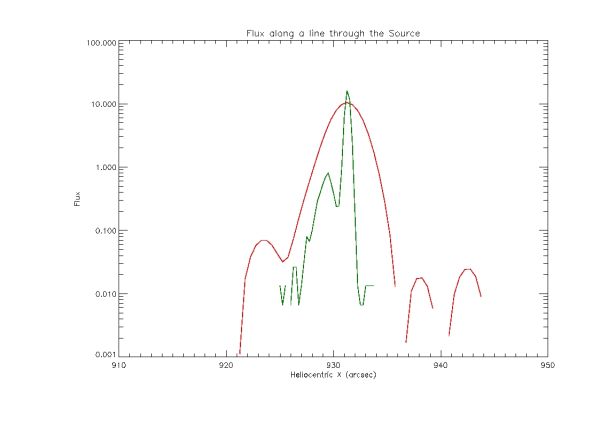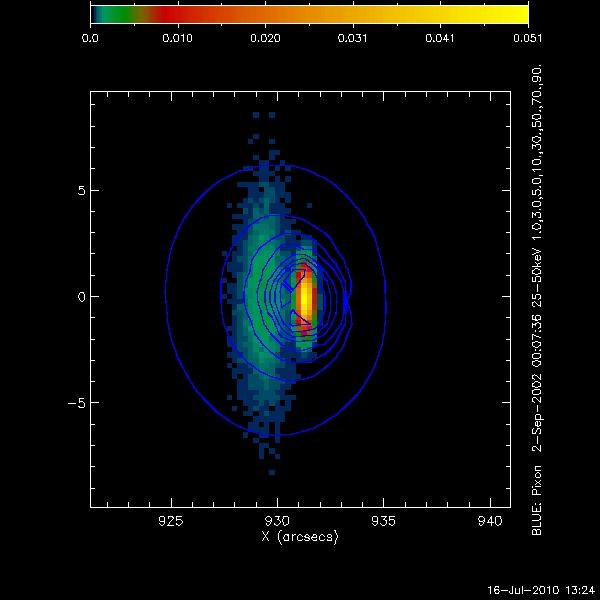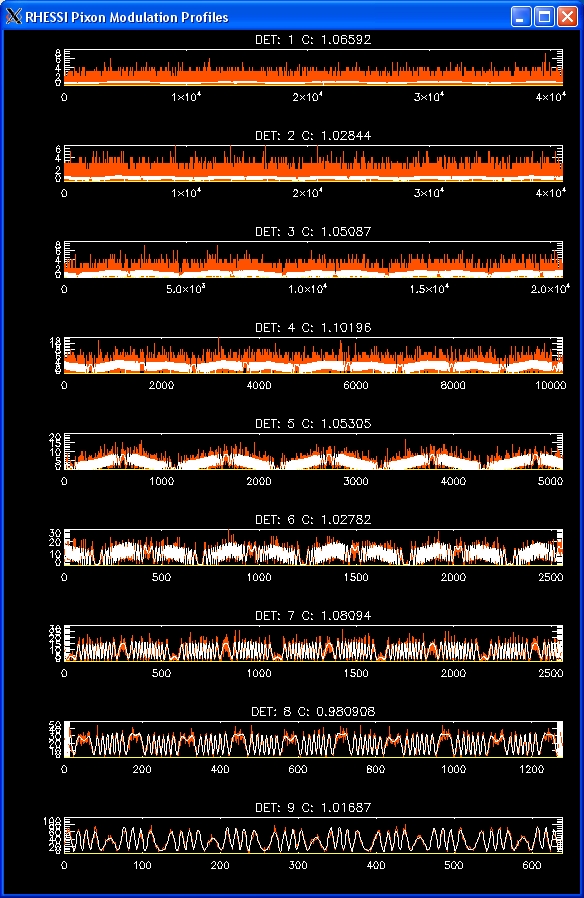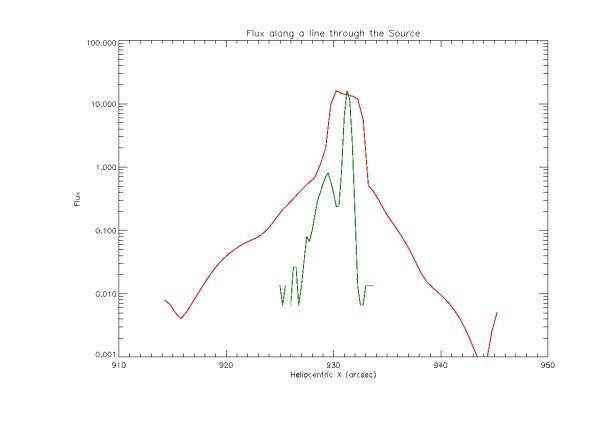Weekly Report 16Jul2010
Simulated Point source with albedo near the limb
- Using new eventlist files created by Eduard Kontar for a simulated 2arcsec source near the limb with albedo, different imaging methods were tested to the and reconstruct the data.
In the first test Pixon was used with a 64X64 pixel Field of View with .5x.5 arcsec pixels.
The Pixon Contours do not match the point source and the albedo. Pixon creates a circular source that does not demonstrate foreshortening. The contours around the source do not lie where they do on the original map. They are deformed toward the center of the sun.
The fits to the profiles for each detector using pixon are shown below.
The combined C statistic for all detectors was 1.05. None of the individual detectors shows a large C statistic suggesting this is a fundamental feature of the Pixon Image Reconstruction algorithm and not an issue with the data
The flux profile along a line for the Pixon image and the data map is shown below. The profiles are taken along a line parallel to the heliocentric x axis through the brightest pixel in the image. The green trace shows the profile from the original map, the red trace is the profile from the Pixon Map. The green trace was multiplied by a constant to account for the difference in the flux in a given pixel for the Pixon reconstruction as compared to the map of the original data. I've emailed Eduard to get the exact conversion, for comparisons in the plot below I've normalized the peak of the data map to the peak of the Pixon Image.
Pixon shows a smooth profile as it moves away from the source while the data contains a shoulder with a smaller peak toward the center of the sun. Changing pixon parameters (pixel size, field of view, pixon sensitivity) did not affect this difference. This may demonstrate a fundamental limitation in using pixon to image the foreshortening of the albedo near the limb.
The same test was run with Clean and MEM_NJIT algorithms. The image below shows the contours from a clean image overlaid on a background image of the original data map.
Clean was run with a clean_beam_width_factor = 2. At the highest fluxes clean images the source as circular, it does not show the foreshortening of the actual source. At the highest contour level clean does show some deformation away from circular as it attempts to image the albedo.
The C statistics for the clean image are below: d1 = 1.00858 d2 = 0.970225 d3 = 0.982332 d4 = 1.11908 d5 = 1.04800 d6 = 1.04195 d7 = 1.05662 d8 = 0.976697 d9 = 1.09013 overall c statistic = 1.00
Once again the c statistics for each detector show a good fit to the profile for each detector.
The comparison of the flux along a line parallel to the heliocentric x axis through the brightest pixel of the source is shown below. The clean profile is in RED, the original data map profile is in GREEN.

Clean shows more structure than the Pixon but the source itself does not show evidence of foreshortening. There is evidence of a shoulder but not in the same location as the original data. Clean displays a better ability to model the structure of the albedo than Pixon.
Finally MEM NJIT was



